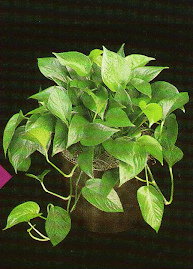9.2 Transport and Angiospermophytes
1)Root systems provides a large surface area for mineral ion and water uptake by means of branching and root hairs by the following process: Cortex cells absorb ions that are dissolved in water, drawn in by capillary action through cortex cell walls. Branching increases quantity and area roots can absorb ions.
2)The ways in which mineral ions in the soil move to root:
- Diffusion of mineral ions down concentration gradients
- Mass flow of water in the soil carrying ions, when water drains through the soil
- Mineral ions move into fungal hyphae, which grow around plant roots in a mutualistic relationship, and then from the hyphae into the root.
Active transport: ATP oxidation provides the energy for protons to be pumped from the inside to the outside of root epidermal cell membranes= chemiosmosis, producing a H+ membrane potential
Cations, such as K+, are driven from the extracellular fluid into the intracellular fluid, through membrane channels, by their electrical charges repulsion from the H+'s concentrated in the extracellular fluid
Anions, such as NO3- move from the extracellular fluid into the intracellular fluid, through membrane channels, by co-transport with H+, which moves down its diffusion gradient.
4) Terrestrial plants support themselves by means of thickened cellulose, cell turgor, and lignified xylemCations, such as K+, are driven from the extracellular fluid into the intracellular fluid, through membrane channels, by their electrical charges repulsion from the H+'s concentrated in the extracellular fluid
Anions, such as NO3- move from the extracellular fluid into the intracellular fluid, through membrane channels, by co-transport with H+, which moves down its diffusion gradient.
Thickened cellulose, both xylem and phloem cells have thick secondary cell walls composed primarily of cellulose, providing rigidity
Cell turgor, plant cell vacuoles have low water potential; water enters the cell and vacuole by osmosis, causing the cell to swell against the cell wall which provides rigidity.
Lignified xylem, vascular tissue cells reinforced with helical or ring-shaped thickenings of the cellulose cell wall impregnated with lignin, which makes the cell walls hard, providing resistence to pressure.
5) Transpiration- loss of water vapor from the leaves and stems of plants
7) Guard cells can regulate transpiration by opening and closing stomata.
8)The plant hormone abscisic acid causes the closing of stomata.
10) Four adaptions that help to reduce transpiration are: The leaves having a thick cuticle and multiple–layered epidermal tissue that reduce water loss. The stomata are recessed in “crypts,” an adaptation that reduces the rate of transpiration by protecting the stomata from hot, dry wind. The trichomes (“hairs”) also help minimize transpiration by breaking up the flow of air, allowing the chamber of the crypt to have a higher humidity than the surrounding atmosphere. Thick, fleshy leaves to store water.




No comments:
Post a Comment